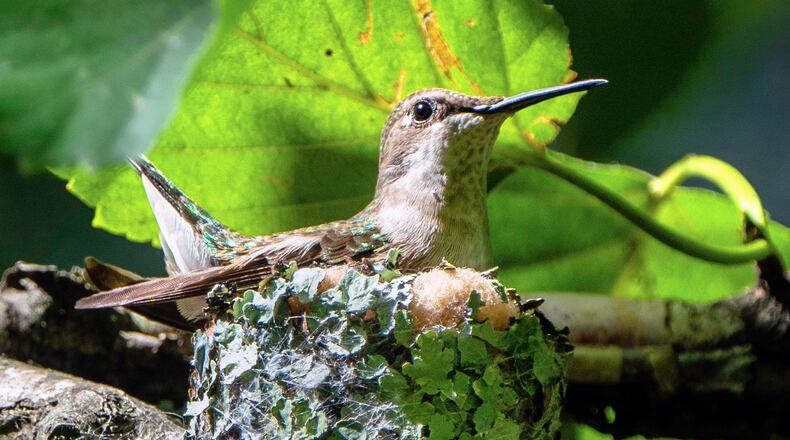Ruby-throated hummingbirds will be returning to Georgia any day now from winter homes in Mexico and Central America. So, now is the time to have your nectar feeders full and ready for their arrival.
After their long, arduous flights — including a 500-mile, nonstop leg across the Gulf of Mexico — the beloved little birds will be hungry and in need of quick energy from nectar. Thousands of them will stay in Georgia to nest, but countless others will stop only for a few days to rest and refuel before going on to nesting grounds as far north as Canada.
Male ruby-throats will arrive first in nesting areas to claim territories. Females will follow seven to 10 days later and almost immediately be wooed by the males. When a female enters a male’s territory, he will fluff out his red throat feathers and commence courting her. He will dive steeply over and over above her; when she perches, he will switch to quickly flying back and forth in front of her.
After mating, the male will completely abandon her. On her own, she will choose a nest site at the tip of a shady tree branch and proceed to gather plant material, spiderwebs, bud scales and pine resin to build the nest. The cup-shaped nest — 2 inches across and 1 inch deep — will be camouflaged on the outside with lichens. The female will lay two pea-size eggs in it and incubate them for 12-14 days.
It is around that time, in early May, when hummingbirds seemingly disappear. Actually, females are too busy tending nests to visit the feeders. Also, the rich nectar from an abundance of flowers may be preferred over artificial nectar.
In addition, nesting females will have a preference for tiny insects — small spiders, gnats, flies, bees — to feed themselves and their babies, which grow fast on the rich insect protein.
Come July, though, as nesting winds down and the days grow shorter, the hummingbirds will sense that they must prepare to head back south for the winter. They will start returning to backyard feeders to quickly gain energy for their long southbound treks.
By late October, they all will be gone.
IN THE SKY: From David Dundee, Tellus Science Museum astronomer: The moon will be first quarter on Tuesday. Venus and Jupiter are low in the west just after sunset. Mars is high in the southwest at dark and will appear near the moon Monday evening.
Charles Seabrook can be reached at charles.seabrook@yahoo.com.
About the Author
Keep Reading
The Latest
Featured



